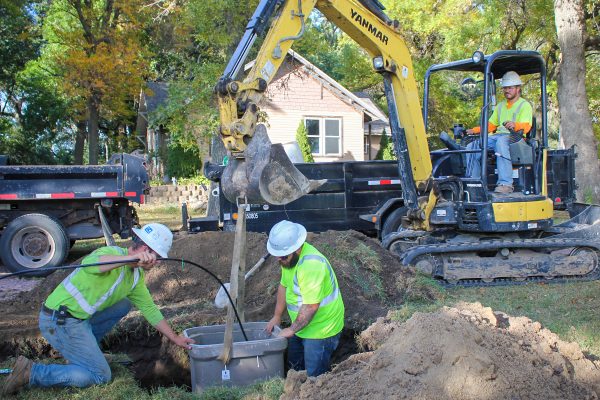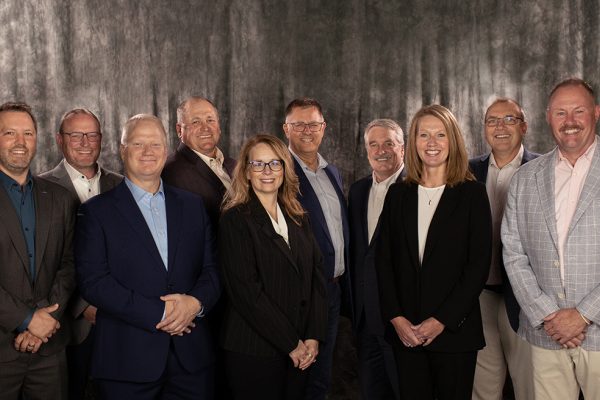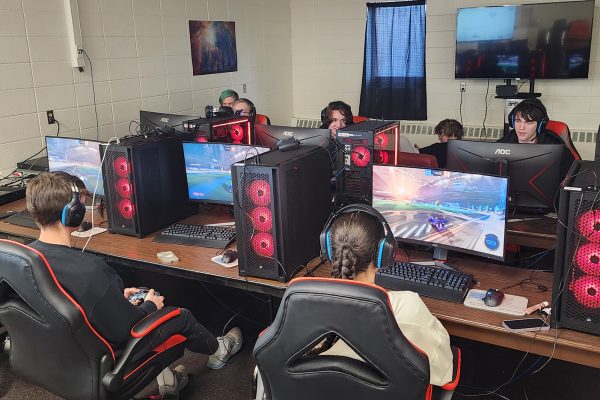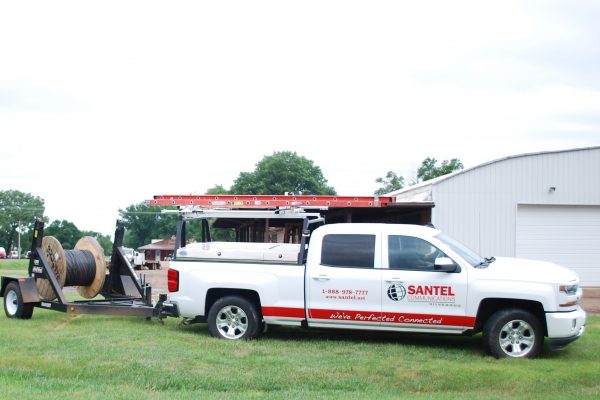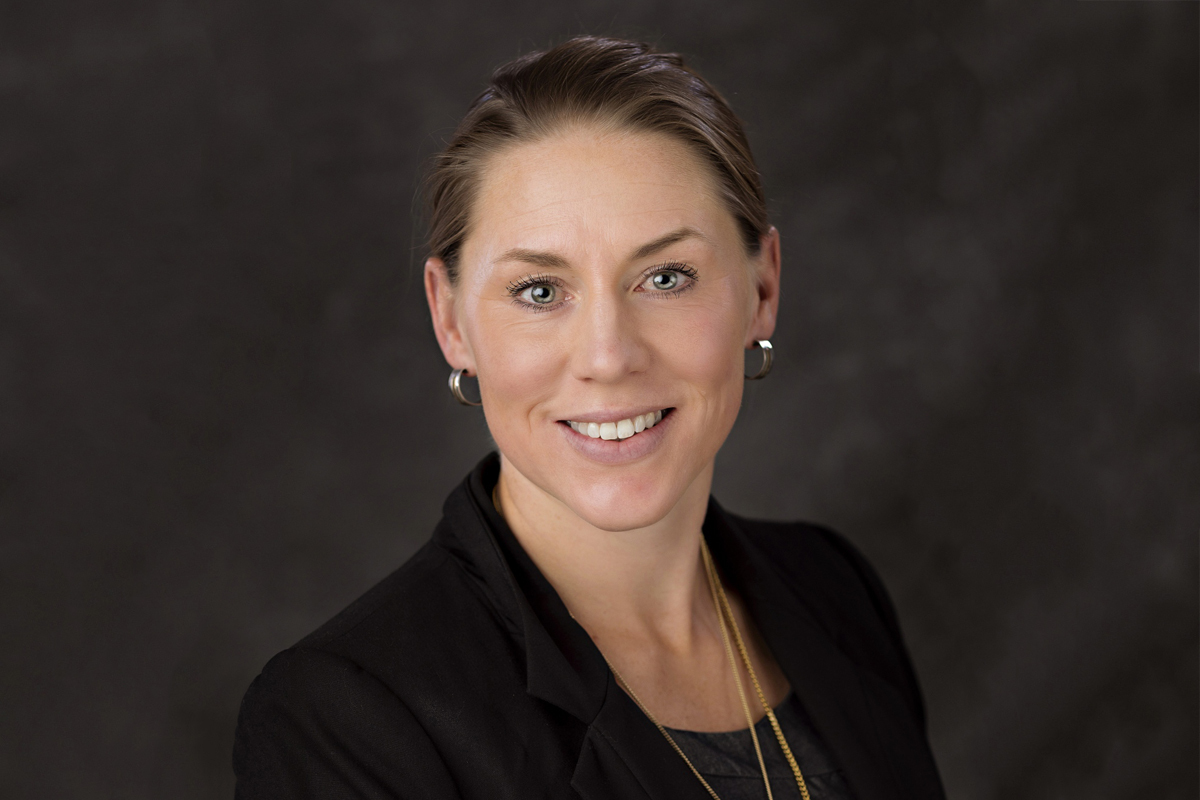
“Trust the journey.”
It’s an affirmation Kara Semmler leans on and its validity strengthened over the past 12 months.
As the pandemic created change in so many areas of life, her background in law, regulation and policy paved the way for her career to advance in December.
Semmler is now the general counsel and executive director for the South Dakota Telecommunications Association (SDTA). She replaces Rich Coit, who retired after 27 years in the industry.
Semmler, a Sioux Falls native, holds a Bachelor of Arts degree in business administration from Carthage College in Kenosha, Wis., and received her Juris Doctorate from the Hamline School of Law in St. Paul, Minn. She and her husband, Aaron, have a son and live in Fort Pierre.
She worked in private practice for nearly a decade before serving for six years as an attorney at the South Dakota Public Utilities Commission and most recently as a Senior Policy Advisor to Gov. Kristi Noem.
SDTA plays an important role in helping its rural telecom members across the state develop broadband connectivity and other state-of-the-art communications services through its regulatory and legislative advocacy. That includes talking with state lawmakers about how the governor’s proposed $100 million in funding for broadband development will keep rural South Dakota viable.
We wanted you to get to know Semmler, as well as her vision for the SDTA and its role in expanding broadband access across the state. So, she joined us for a quick Q&A session.
What attracted you to the South Dakota Telecommunications Association?
I went to work for the South Dakota Public Utility Commission as a staff attorney shortly after I moved to Pierre in 2005. At that time, SDTA member companies appeared frequently in Commission proceedings. I was a new attorney with no experience in telecommunications. Rich Coit, the prior Executive Director, reached out to help me learn and understand the complicated world of telecom regulation. That same first year of work at the PUC, I attended an SDTA annual meeting. I witnessed the priority placed on education and cohesive strong advocacy. I was welcomed into a professional, collegial environment of folks all dedicated to the same cause. When Rich announced his retirement, I jumped at the opportunity to work with SDTA member companies once again.
You’re following in the footsteps of a man who served in your role for 27 years; how has the transition been?
Rich made an impact on this industry. I have tremendous respect for his depth of knowledge and advocacy skills. I am grateful for the weeks I worked with Rich prior to his official retirement. However, the transition will take time. Thank you to everyone I work with from across the industry — their willingness to help and share information is appreciated.
How has your background best prepared you for this position?
Certainly, the work I did at the PUC and the legal practice I had thereafter have prepared me, academically, for this role. However, living in central South Dakota in an area where I must rely on satellite or DSL service for broadband at my home may be just as impactful.
What are some of the biggest challenges for the telecommunications industry?
While the consumer’s needs and demands evolve, the rural telecom providers’ challenges remain the same:
- long distances between customers,
- low population density in service areas and often-difficult topography.
SDTA member companies have been connecting South Dakota people and facilitating rural South Dakota’s place on the map for decades. The predictability and adequacy of universal service support is essential in doing so. Steps must be taken to stabilize the Universal Service Fund contribution base.
A strong, educated workforce is also essential in carrying out the rural telecommunication company mission. Good people… attracting, inspiring, and keeping good people must remain at the top of the priority list.
What are some of the biggest opportunities for the telecommunications industry?
The ways in which we connect with others locally and globally will continue to evolve. The need for connection will also evolve. Opportunities will open along the way.
How has the global pandemic affected the telecommunications industry in South Dakota?
SDTA member companies believe “just good enough” broadband is not sufficient. As a result of SDTA member companies’ historic investment in fiber infrastructure, they were able to meet the needs of their customers working and learning from home. SDTA member companies live and work alongside their customers. Despite the pandemic, they remained responsive to customer needs.
While the pandemic highlighted all the good work SDTA member companies do, there are negative impacts. All future projects and construction timelines will be impacted by a fiber supply shortage. In addition, contractors are in short supply as states across the country work as fast as possible to connect residents to broadband.
What are your next steps for the Association?
The most immediate next step: I want to get together for the SDTA annual meeting in Deadwood this August. I am excited to meet the people behind all our member companies. I am hopeful by August we all will feel safe traveling and gathering in person.
What gets you up in the morning?
Yoga and coffee. Both are morning necessities.
What is a book that had a profound impact on you or that you thoroughly enjoyed?
I am fascinated by stories about those who settled in this place. “My Antonia” and “Giants in the Earth” are a couple of my favorites. The people who survived the extreme hardship and challenges established the foundation for the values and beliefs that we share in South Dakota. This is a special place with a unique culture and way of life that really cannot be described in words.
What song do you always sing along with?
I am a big fan of pop music from the ’80s - yes, I'm talking Michael Jackson and Madonna - and country music of the ’90s - think Randy Travis and George Strait. I can’t help but sing along when I hear it.
Where are three places you’d love to visit?
I love to travel. The following places are on my list:
- Ireland
- Zell am See, Austria — I visited this town while in college and want to see it again with “adult” eyes.
- Bora Bora — an overwater bungalow is a must!
When staying closer to home, where is your favorite place in South Dakota?
On the back of a horse exploring the Black Hills.
What are you most grateful for?
Without a doubt, I am most grateful for my family and the life we create together. I am grateful to have my husband and son on my team.
